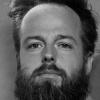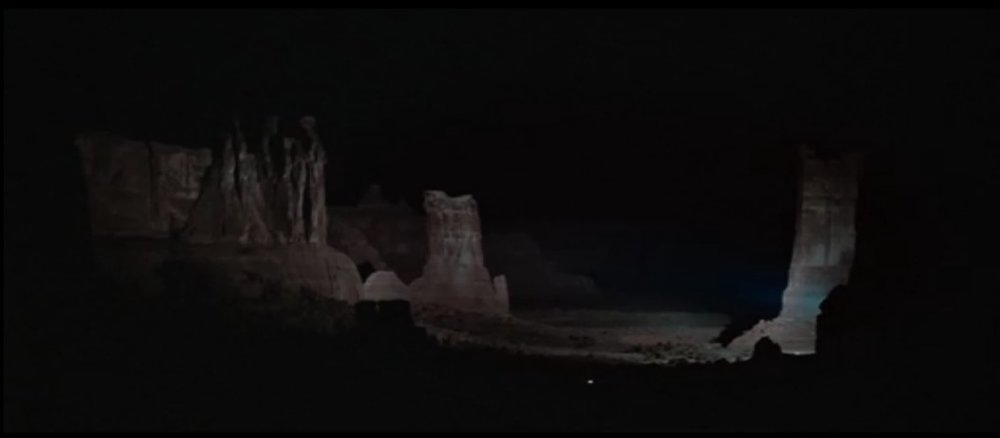-
Posts
129 -
Joined
-
Last visited
About Charles Haine
- Birthday 06/19/1979
Profile Information
-
Occupation
Director
-
Location
New York
Contact Methods
-
Website URL
http://CharlesHaine.com
-

Key West Dolly (fits in a suitcase)
Charles Haine replied to Charles Haine's topic in Grip & Rigging
Thank you so much! It was Pallada Designs, and that helped tremendously. I tracked down Paul Pallada in retirement in Holland and he's helping me find parts. GRATITUDE! -
Anybody know anything about the Key West Dolly? It fits in a "suitcase," appears to be carbon fiber, but I can't find much online. One got donated to my workplace, but we're missing some parts, assuming it'll just be a 5 year long wait on eBay for someone to post them, but maybe someone here knows who made the dolly, or has some manuals or something? A man can dream.
-
So maybe a launch in January? I teach at a film school in Brooklyn, would love to have a lab nearby again.
-
I'm a freelance colorist and I teach color grading and post at Brooklyn College here in New York. Anybody know of a Blackmagic Cintel Scanner for rent in the tri-state area? would love to find a way to not only scan a few old personal things, but also maybe get my students in front of a scanner for a few hours. Most likely not going to be a regular part of their career, but would be nice to introduce them to the technology, and the blackmagic seems the easiest way to do that. Charles
-
Great post. I had a client I did a "low-rate" favor job for on the agreement that their next job was mine. I didn't hear from them for 2 years, and on a whim, I emailed, and they had just lost their freelancer, were desperate for someone, and had forgotten about me. I booked that job, and five figures worth of work through them in the next six months. Keeping in touch doesn't need to be awful. I use "contactually" to remind me to email 5 old clients every day. I just say hello, talk about what I'm working on, and ask about what they are working on. That's it. But it keeps us on each others radar, and sometimes it leads to work. Sometimes it doesn't, that's OK too. Rapportive is another great tool, as soon as you email someone it gives you all their social links (linedin, twitter, facebook, etc.) so you can connect and stay on the radar that way. The way the human brain works is you are always going to forget people, and reminding folks you exist isn't a bad thing at all. And, of course, the best way to keep clients is to be great at your job!
-
Did anyone else notice how radically different the release print for IDES OF MARCH looks from the web trailers? I know it's not uncommon for the trailer to be cut from the dailies transfer, which might not exactly recreate the look dialed in in the final DI, and of course the trailer generally gets a dedicated grade that leads to a more "extreme" look which might be overwhelming or irritating in a feature. And of course it's a web view vs. a film print in a theater. That said, the look of the print on Ides of March is so deliberate (riffing on 70s Gordon Willis paranoid thrillers like PARALLAX VIEW and ALL THE PRESIDENT'S MEN really beautifully; it's worth a watch for the cinematography alone, and it's also a fantastic movie) that I would guess it was built in at the dailies. So, I think maybe the trailers were deliberately graded in a more modern, saturated, grain free fashion. Interesting world we're getting into now, but I guess it makes sense; as beautiful as the print is, it might be a little off putting in a trailer. Anyway, cinematography fans, check it out, great movie, great camera work.
-
Anybody know what unit would've been used to light up this desert night scene in THELMA AND LOUISE? It came out in 1991, that's too early for the SoftSun, right? Or do I have my timeline wrong about that? It's a beautifully shot movie, love Adrian Biddle's work, but saw this shot and just can't figure what unit they would've used for all that intensity and spread. If you can't tell, the lights at the bottom of frame are a car driving through a giant Utah style canyon. Went looking for an American Cinematographer article but nothing turned up.
-
Grading a project shot on the Alexa, I noticed the footage looked a bit like the attached photo. This seemed kind of strange to me; motion blur makes sense if the rectangle is moving fast enough and the shutter is 1/48, but why does it appear pulsed? As if it's recording two frames and mixing them together? Shouldn't it be a continuous blur? It also seems like one of the two images (or pulses, or bursts, whatever you want to call it) is more exposed than the other. Is the alexa taking two images at different exposures and mixing them together for latitude, like a scanner? Or is there a much simpler explanation I'm missing. Anybody have any thoughts?
-
As much as it is depressing to say it, they don't exist at least partially because they don't make a lot of sense. One of the driving elements behind the rebirth of stereoscopic is digital image capture. Not only does 35mm 3D involve shooting twice as much footage, it also means keeping two film cameras with their shutters perfectly in sync (not impossible, or even hard really, but a layer of complication). And it means having perfectly matched sets of cinema lens. Not impossible, hence the waves of stereo in the 50s and the 70s/80s, but complicated and pricey. 3D is already complicated and pricey enough without adding these elements into the mix. Thus, the growth of 3D as a digital-capture only phenomenon.
-
I'm in LA but don't mind working down in Orange County, you see see my work at www.charleshainedp.com. I have several RED and 5D packages, as well as a variety fo 35mm gear if the job calls for it.
-
I've been meaning to post this for a few weeks but haven't had a chance to yet. I was lucky enough to work with a very talented directing team at dirty robber doing the title sequence for a new TNT show, Rizzzoli & Isles, which ran through the summer and I hear got a season 2 pickup. For the final title shot, the creative called for a split screen that felt like two worlds colliding; both sides of the split screen would be dressed in order to line up matching one world to the other, and then we would rack through both halves at the same speed so that it was a split screen but the simultaneous focus made it feel like the same shot. If that isn't making sense, take a peak here, it's the final shot: http://vimeo.com/15378140 I had wanted to do it using the old Preston speed aperture computer, the original from the 80s. I had had some success before programing in precise focus movies (focus hitting certain marks over a given period, like 1 second) but using the aperture motor from the SAC on the focus ring, and it worked great. This was vital since we had to make sure the racks were identical on both sides of the split screen. But that was 2004, and I couldn't find anybody who rented out the SAC anymore. So we went with a Cmotion system, hoping to be able to do the same thing. Unfortunately, because it's so much more sophisticated, you can't trick it into doing that; it needs camera feedback in order to do an aperture rack, and aperture racks are the only timed racks it can do. However, we noticed that if you turned the focus knob as fast as possible the focus rack feathering caused a delay to the focus move. So, no matter what, if I turned the focus ring between it's hard stops fast enough, the move still took precisely 1 second. This was a really lucky save for us; the actual speed of the rack didn't matter (with no human subject or any movement except the rack, speed could be manipulated wildly in post), we just need it to be precisely the same rack in both shots that were to be comped together, which the feather/lag on the cMotion provided. That, combined with the two customizable stops on the cMotion, made the focus rack part, which had been very stressful, a breeze. It took the art director a full day to dress both sets to match each other, and on set we used an AJA IO-HD to do a live split screen in order to do the final line-up on the half of the scene we shot second (the police station, on the left). In the end, the shot took a full day of dressing, a full day of shooting, and then several days of post production, but I think it comes off rather well. Nobody I show it to seems to get precisely how hard it was to pull off.
-
Since it's a cinematography forum, my bet is that this category is for on set stereoscopic work. Though of course that is merging more and more with post 3D modelling, so there will be some overlap. I teach a course in Stereoscopic Cinema at CCH in Los Angeles. Can you do your next movie in 3D? Of course, just depends on your budget and delivery format needs. It might not be entirely feasible quite yet for the truly indie (no budget) but if you have any budget at all 3D is becoming more and more realistic.
-
http://www.3dfilmfactory.com/
-

A Movie by Robert Costello
Charles Haine replied to Robert Costello's topic in Jobs, Resumes, and Reels
I'm a little confused; are you a director or cinematographer? Are there clips to evaluate, or simply stills? Where are you located?




